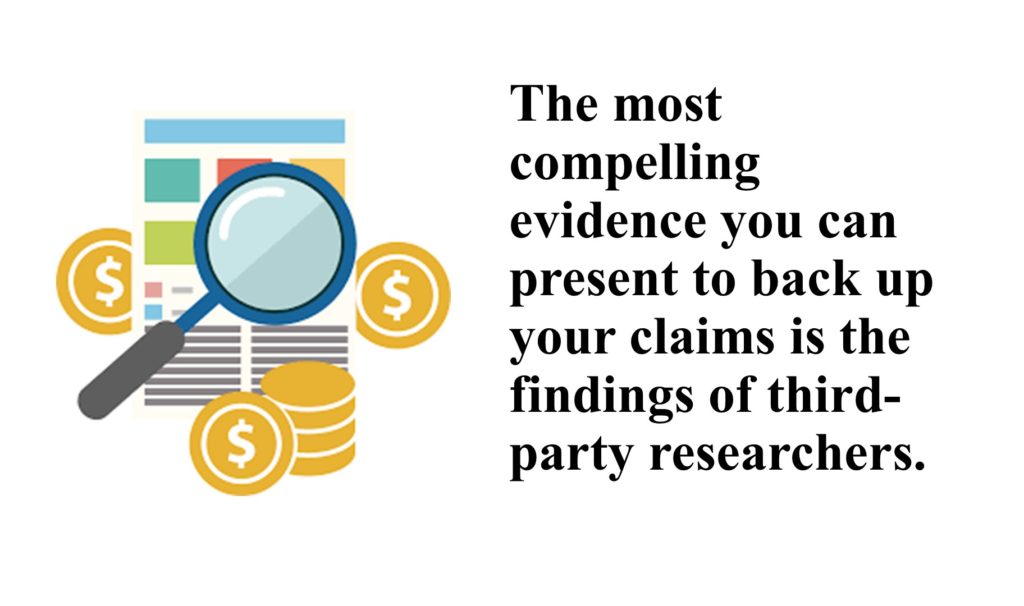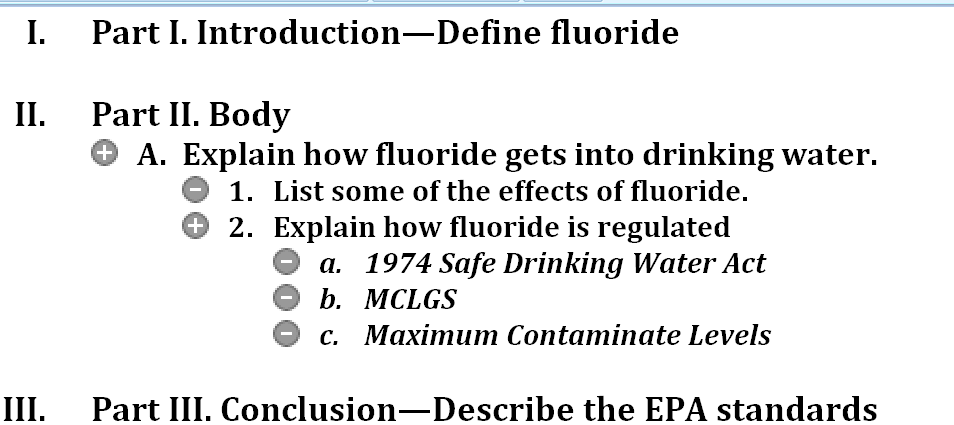Marketing white papers are data-focused, so they should be supported by significant research. There’s no hard and fast rule on citations but you need to cite any information that is not public knowledge and that you didn’t know before beginning your research. However, understand that the reader’s confidence is likely to increase with an increasing number of cited references.
Of course, all resources must come from authoritative sites. In order to write a valuable document, all research materials must be from credible, reliable sources.
Good white papers are fact-based and research-driven. You’re not here to throw your opinions out to the world without data to back them up. Depending on what you’re covering, you might get by with nothing more than Google and your company’s own insights. But if you want to take things to the next level, though, you’ll need to do deeper research.
Here’s how you do it.
Research reports
The most compelling evidence you can present to back up your claims is the findings of third-party researchers. In just about every industry, there is a research firm that publishes research reports on trends in the industry.

For example, Gartner is one of the best known and trusted research firms. This is how they describe their service: “Gain an essential edge with independent, objective, accurate and rigorously researched insights drawn from over 1,900+ analysts and 380,000 client interactions — including 130,000+ executive interactions — each year.”
Another well-known research firm is Forrester. Here’s how they describe their service: Forrester Research focuses on the hardest, most important dynamics of the day; dynamics that have the potential to create extraordinary opportunity for some and put others in desperate straits.
Both of these firms produce research reports, white papers, research insights and other documents that present the results of their research. I recommend you begin your research for your white paper at the websites of the research firms in your industry.
Review their published research to find the facts, trends, statistics and findings you need to back up your claims in your white paper.

Read other white papers
Speaking of white papers, another source of research for you is white papers published by your competitors and other organizations, including governments and trade associations. These white papers give you insight into your topic, telling you what’s been discussed, where the conversation is headed, and what has yet to be discussed.
These white papers are also useful because they will cite research sources that you may be unfamiliar with. Visit these resources as well, and use them to add authority to your white paper where needed.
Industry sources
Every industry of any size has a trade association. Trade associations publish reports, newsletters, blogs and other publications that present industry news, trends and facts. Trade associations are particularly helpful for gathering facts about the size and composition of the industry.
Trade associations also host conferences, webinars and other events. These are a great source of original research conducted by members of the association. Sometimes you will find PowerPoint presentations, transcripts and handouts of workshop sessions posted on the websites of the conference organizer.

Internal documents
The next place to look as your research your white paper is internally. Root through your filing cabinets, servers, office library and other places for internal research, reports, tables, charts and publications that present your unique take on the topic of your white paper.
Interviews with subject-matter experts
If you are like most copywriters and content marketing writers, you will be invited to write a white paper on a topic that is outside your area of expertise. This does not have to be an issue, as long as you can get access to people who are experts in the subject matter. In the world of tech, these people are called subject matter experts, SMES.
They are generally tech people who work daily with a given hardware or software platform. So they are a perfect source for insights into the topic of your white paper if you are writing about infrastructure automation, artificial intelligence, machine learning or any other technical subject.

Original research
Your final source for your research is original research. This is the most difficult option, and the most expensive, but it can provide the most valuable results. After all, if you have access to publicly available information, so do your competitors. But original research, research that you conduct yourself, is powerful.
Original research positions your organization as an authoritative source of information on your topic.
Original research gives you something that no one else has—original insights. And that makes your white paper much more valuable than something that a competitor slaps together after spending a morning on Google.
Finally, original research gives you unique insights into your audience and your industry. When you conduct interviews, polls, surveys, focus groups and other custom research, you learn things about your customers that you can learn in no other way.
As you are collecting your research, you need a simple but effective way to organize your findings. The easiest way I know of is to create a master document in Microsoft Word. Under View, view your document in Outline view.
Then break your document into sections, each section dealing with a major part of your white paper. You aren’t outlining your white paper at this stage, just breaking up your research into chunks.

Give each chunk of research a title, and set that title as Heading 1. Creates subheadings whenever needed, and set those as Heading 2. As you find statistics, facts and other research that you think you can use in your white paper, copy and paste it under the appropriate heading.
If a document is too large to copy and paste, or if the source document is a web page, cite the source instead, giving it a descriptive name and path that you can easily find and follow back to the source document.
As you can see, the big advantage of using the outlining feature in Microsoft Word is that it lets you show and then hide huge sections of your research. This makes it easy to drill down into each section as you conduct your research, so that you put each piece of research in its proper place.

When you fill your white paper with sound research from industry specialists, subject matter experts and other authoritative sources, you increase trust and position your company as an authority on your subject. And once you gain the trust of your potential clients, they are more likely to listen to your sales pitch.
So, if you want your white paper to generate leads for you, do your research. Your prospects will reward you with their business.
…………………………
About the author
Alan Sharpe is a freelance, B2B inbound writer who writes white papers and other content for HubSpot Partner Agencies and their clients. Ask him to quote your next project.

Recent Comments